|
Zlin Z-181/C-6
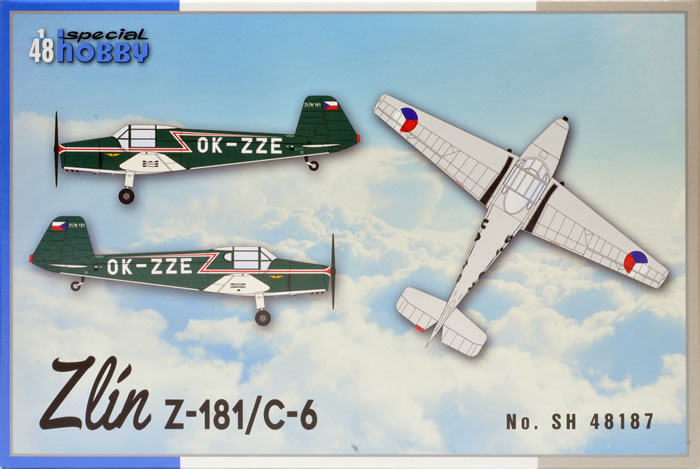
Special Hobby, 1/48 scale
S u m m a r y : |
Catalogue Number: |
Special Hobby Kit No. SH48187 – Zlin Z-181/C-6 |
Scale: |
1/48 |
Contents & Media |
55 parts in grey plastic (incl. 16 parts not for use); two clear parts; five resin parts; 28 photo-etched parts on one fret; markings for two options. |
Price: |
Available on-line from these stockists:
Click here for currency conversion |
Review Type: |
First Look. |
Advantages: |
Cleanly moulded; simple parts breakdown; subtle surface textures. |
Disadvantages: |
Limited run nature (lack of locating pins etc.) will require a bit of focus. |
Conclusion: |
This is a straightforward kit of a simple but important trainer and liaison aircraft.
Special Hobby's 1/48 scale Bestmann is not presented quite to the same standard as their recent 1/32 scale Tempest, but it is cleanly moulded, features subtle surface features, effective use of resin and photo-etch and if you have a few kits under your belt you won't have any trouble with the absence of locating pins.
Just take your time aligning parts, test-fit frequently, and you'll have an attractive result.
Recommended. |
Reviewed by Brett Green

Special Hobby’s Mirage F.1B/BE is available online from Squadron.com
The Zlin Z-181 was the Czech production version of the Bücker Bü 181 Bestmann.
After the German withdrawal the production continued after the war in the same Zlin works, now denominated as the C.6 and C.106 for the Czechoslovak Air Force and as the Zlín Z.281 and Z.381 in various versions for civil use. 783 aircraft were built. Between 1943 and 1945, Hägglund & Söner AB in Sweden built 120 Bü 181's under license with the Swedish military designation Sk 25.
The Bücker Bü 181 Bestmann
The Bücker Bü 181 Bestmann was a two-seater, single-engine aerobatic monoplane aircraft built by Bücker Flugzeugbau GmbH in Rangsdorf, near Berlin and extensively used by the Luftwaffe in World War II.
The Bücker Bü 181 was named Bestmann after a German maritime term designating a member of the deck crew on coastal or fishing vessels. The prototype Bü 181 (D-ERBV) made its maiden flight in February 1939 with Chief Pilot Arthur Benitz at the controls. After thorough works and official flight testing by the Reichsluftfahrtministerium (RLM) the Bü 181 was nominated to be the standard primary trainer for the Luftwaffe. Series production of the Bü 181 commenced in 1940. The production types were designated B to C with only slight variations between each, and could be powered by the Hirth HM 500 A or B.
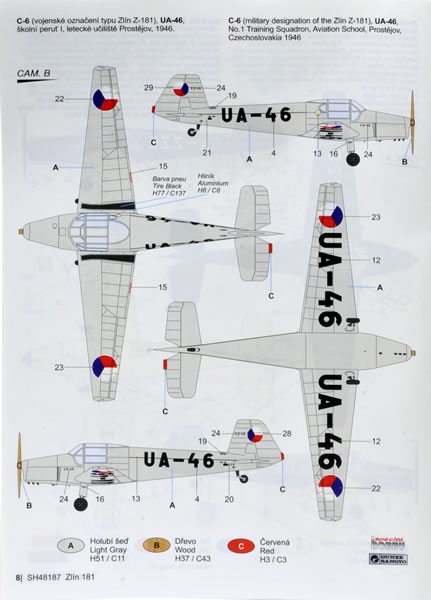
The Bü 181 aircraft was a single-engine low-wing monoplane with fixed undercarriage, split flap, twin controls and two adjustable seats arranged side-by-side. The cabin section of the fuselage was of a tubular steel frame construction whereas the rear of the fuselage had a wooden shell. The wing assembly and tail unit were also of wooden shell construction. All the rudders, elevators and ailerons had wooden ribs and are covered in fabric. The flaps were metallic on the B types and wood on the C types. The Bü 181 Bestmann was powered by a 105 hp four-cylinder Hirth HM 500A or B piston engine. The aircraft was designed for training flights, pleasure trips and aerobatics. Its strength corresponded to Stress Group 5 with a limited load (single occupancy) and Stress Group 4 fully laden.
The Bücker factory at Rangsdorf built most of the Bü 181's, but because of demand was forced to license the design to the Fokker Company in the Netherlands, who subsequently built 373 of the type for the Luftwaffe all of which were delivered by the end of 1943. Production of both the Bü 181B and the slightly modified Bü 181C was begun by Fokker in Amsterdam in 1942 and its total wartime production was 708 aircraft.
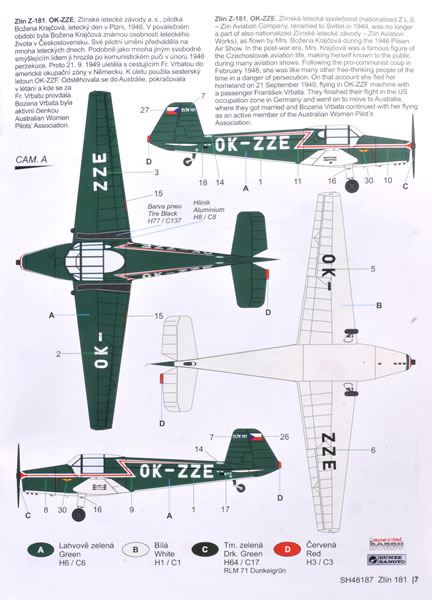
During the 1950s the Heliopolis Aircraft Works of Egypt acquired a Czechoslovakian licence to produce the Zlín Z-381 with a 105 hp Walter-Minor engine. It was produced for the Egyptian Air Force as the Heliopolis Gomhouria (meaning "Republic") and subsequent versions were supplied to other Arab air forces. At least 300 Gomhourias were built. In all, 3,400 aircraft were built but only a handful survives today.
Although built primarily as a trainer for the Luftwaffe, the type also performed other duties such as courier & liaison. From March 1945 an order was issued to concentrate all the available Bü 181s to be converted either to the "tank busting" role carrying four Panzerfaust anti-tank grenade launchers from wing-mounted launchers (C-3 subtype) or to the night harassment role carrying three 50 kg bombs (B-3 subtype), most likely inspired by the Soviet female nocturnal Nochnye Vedmy units' campaigns from 1942 to V-E Day. These units saw very limited use in the final days of the war due to the war situation. However, some missions were carried out, achieving moderate success but at the price of severe losses. One restored Bestmann on the tank buster configuration is on display at the Deutsches Technikmuseum Berlin.
Test pilot, and sister-in-law of Claus von Stauffenberg, Melitta Schenk Gräfin von Stauffenberg was flying a Bücker Bü 181 when she was shot down and fatally wounded in 1945.
Source: Wikipedia
Previous 1/48 Scale Bu 181 Bestmann kits
MPM released a limited run plastic 1/48 scale Bucker Bu 181 Jungmann before the turn of the century. As you would expect of its era, this was a basic kit with vacform canopy.
Surprisingly, another 1/48 scale Bestmann has been released this year from newcomer Stransky. This kit appears to have nothing in common with the new Special Hobby kit. I haven't actually seen this kit so I can't offer an authoritative opinion.
The sprues and resin parts from this kit appeared previously in the recent Special Hobby 1/48 scale Jungmann kit, reviewed on HyperScale in November2016.
Special Hobby's 1/48 scale Zlin Z-181 shares most of its parts in common with the recent Special Hobby Bucker Bu 181 Jungmann.
This kit comprises 55 parts in grey plastic (including 16 parts not for use), two clear parts, five resin parts, 28 photo-etched parts on one fret and markings for three options.
Compared to the Special Hobby 1/32 scale Tempest that I had the pleasure to build in October 2016, this model looks more like a traditional limited run kit.
This is not necessarily a bad thing though. Although little luxuries such as fuselage locating pins are not present, the parts are cleanly moulded and sprue attachments quite modest, so parts removal and cleanup will be fast and easy. You won't find the tall ejector pin towers that older limited run kits suffered from either!
The real aircraft was very simple too, so short run technology does not limit the potential detail.
In fact, surface textures are very subtly done, and trialing edges nice and sharp.

Interior detail is basic, reflecting the real thing. The instrument panel is a plastic part with crisply moulded dials, bezels and switches, enhanced with an overlay decal.
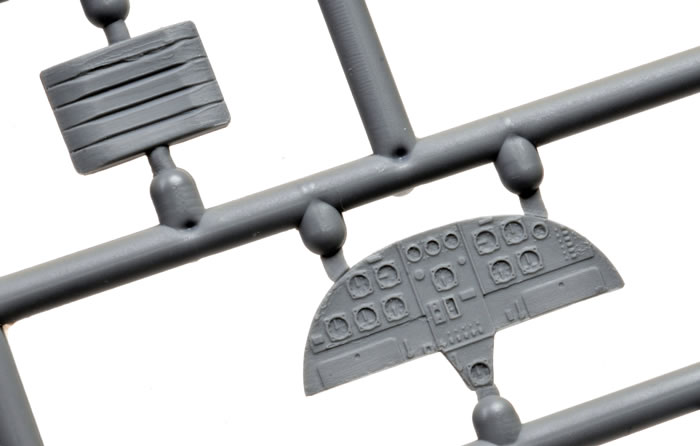
A new, slightly revised photo-etched fret is included with different style harness straps. Also included are rudder toe straps, the mesh cargo barrier and other smaller details.
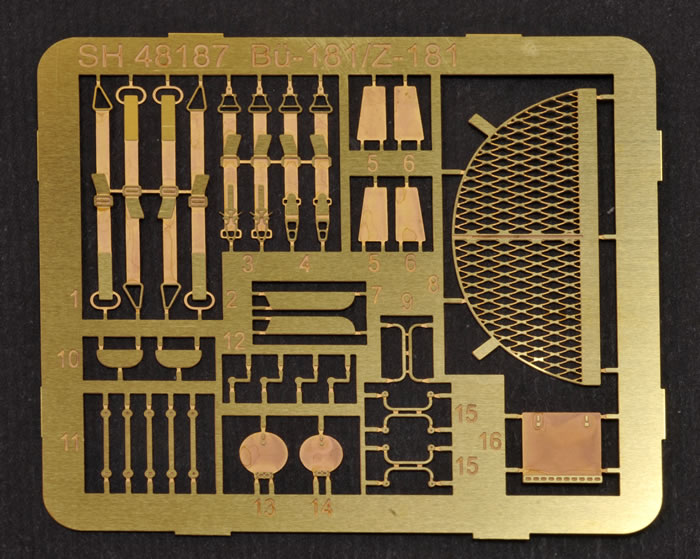
The wings are supplied as upper and lower halves for port and starboard sides. They are held in place with tabs that slot into the fuselage wing roots. Each one-piece horizontal stabiliser is also secured with a small locating tab.
The resin partial engine is nicely detailed and will be visible through the front intake.
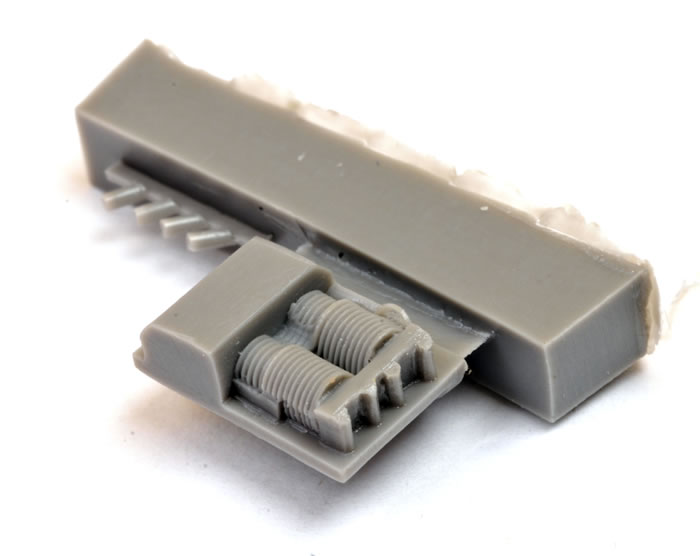
Four tiny individual hollow resin exhaust stubs are also included.
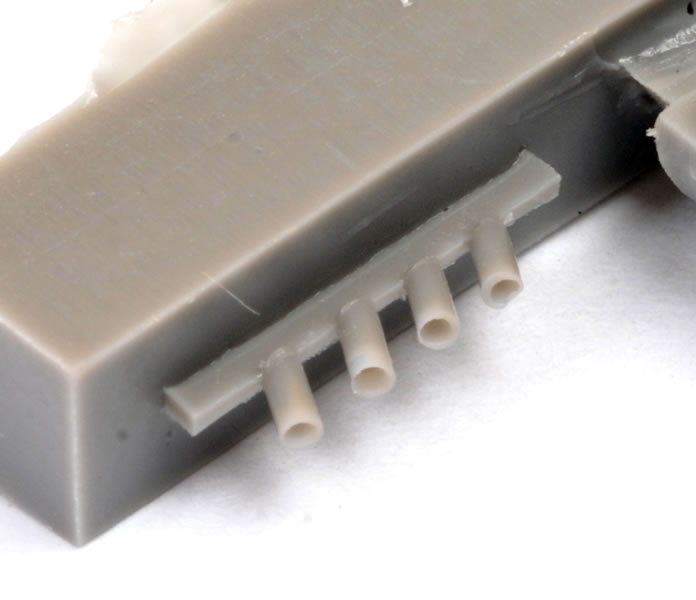
Two styles of wheels are provided. The instructions indicate which option goes with what markings.
The canopy is presented as a front and rear section, and is moulded shut.
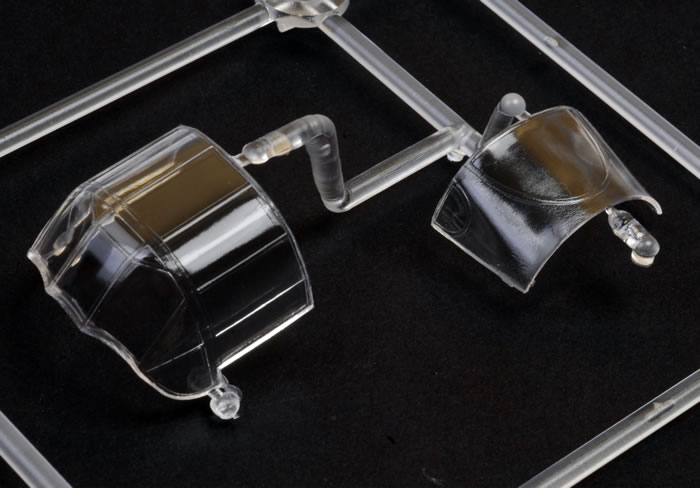
A number of parts are present that are not designed to be used with this release but suggest that we will see different variants in the future. These include four Panzerfausts with wing mounts, and skis.
Markings
The decal sheet is printed by Aviprint. Colours look great and registration is perfect.
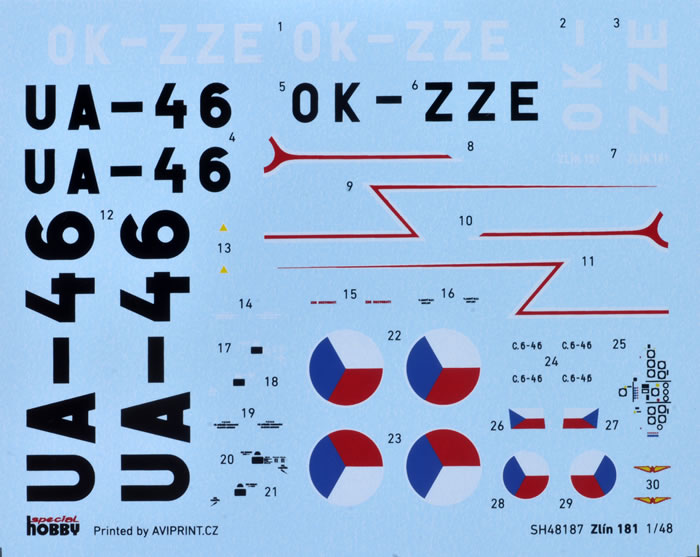
Markings are supplied for two post-war Czech machines - one private and one military.
This is a straightforward kit of a simple but important trainer and liaison aircraft.
Special Hobby's 1/48 scale Zlin Z-181/C-6 is not presented quite to the same standard as their recent 1/32 scale Tempest, but it is cleanly moulded, features subtle surface features, effective use of resin and photo-etch and if you have a few kits under your belt you won't have any trouble with the absence of locating pins.
Just take your time aligning parts, test-fit frequently, and you'll have an attractive result.
Recommended.
Thanks to Special Hobby for the review sample.
Review Text and Images Copyright © 2017 by Brett Green
Page Created 14 February, 2016
Last updated
14 February, 2017
Back to HyperScale Main Page
Back to Reviews Page |
